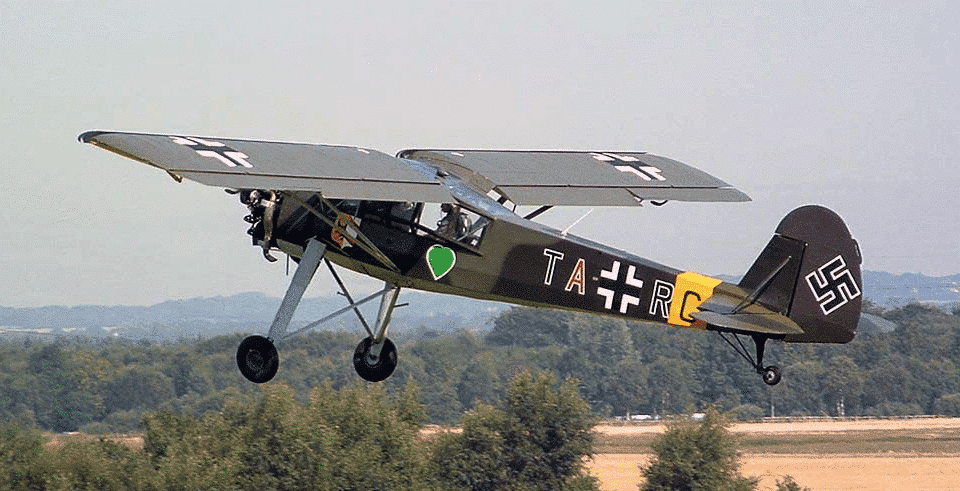Fieseler Storch
The Fieseler Storch is instantly recognisable with its long, spindly undercarriage and high aspect ratio wings, making it one of the most distinctive aircraft of the Second World War. Renowned for its incredible low-speed performance, the Storch could serve as a reconnaissance, liaison, and ambulance aircraft. In favourable conditions, it could almost hover in place—a remarkable feat for any aeroplane. Notably, it served as a personal transport for Field Marshal Rommel and played a pivotal role in the daring mountain rescue of Italian dictator Mussolini.
This particular Storch, W.Nr.1827 (registered G-BPHZ), was constructed in France in 1942 and originally fitted with an Argus inverted V8 engine. Post-war, it was operated by the French Armée de l’Air as an MS 500 Criquet. After its military service, it was re-engined with a Jacobs radial, becoming an MS 505 Criquet, and utilised for glider towing before being brought to the UK in 1988. In 2002, it joined the Historic Aircraft Collection. During restoration, the removal of its French data plate revealed the original German plate beneath, confirming much of its equipment and parts were German-made.
An original Argus V8 engine, along with its propeller and accessories, has been acquired. The aircraft is now being meticulously restored to its original MS 500 specification, complete with German equipment and instruments, to faithfully reflect its wartime configuration.
|
Type: |
Reconnaissance & Communication |
|
Wing Span: |
48ft 4in (14.25m) |
|
Length: |
32ft 5in (9.90m) |
|
Power-plant: |
300hp 7-cylinder Jacobs radial |

